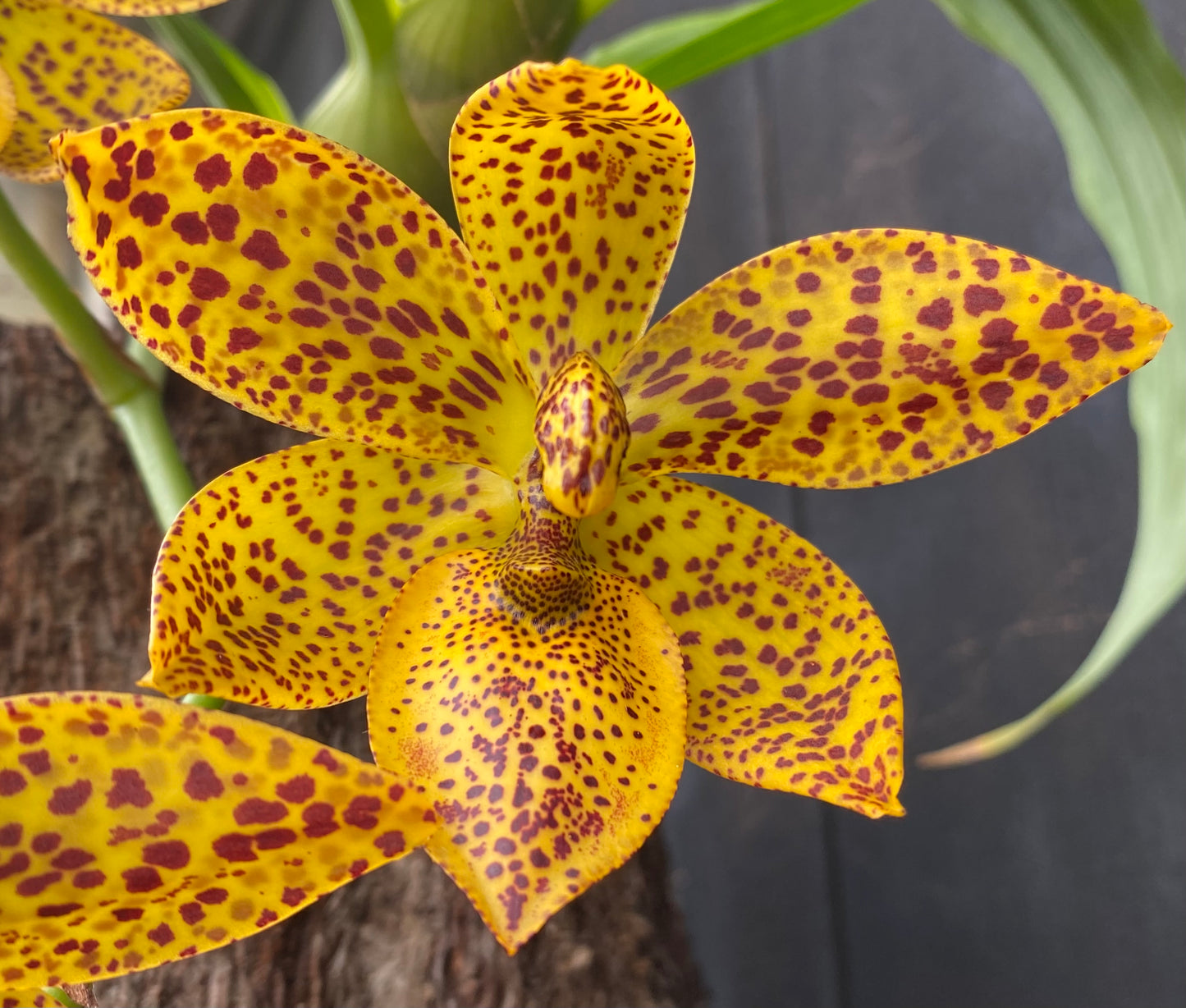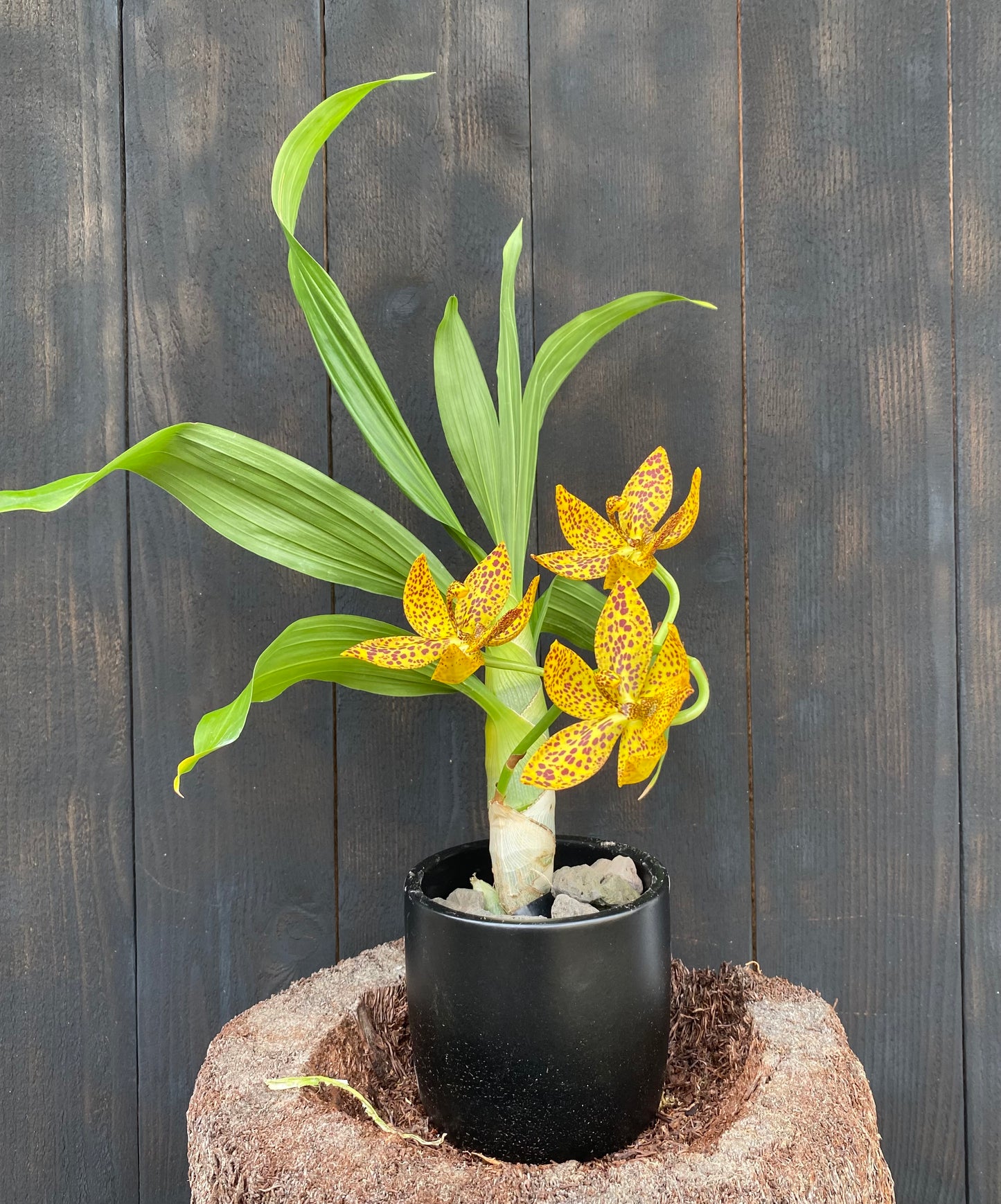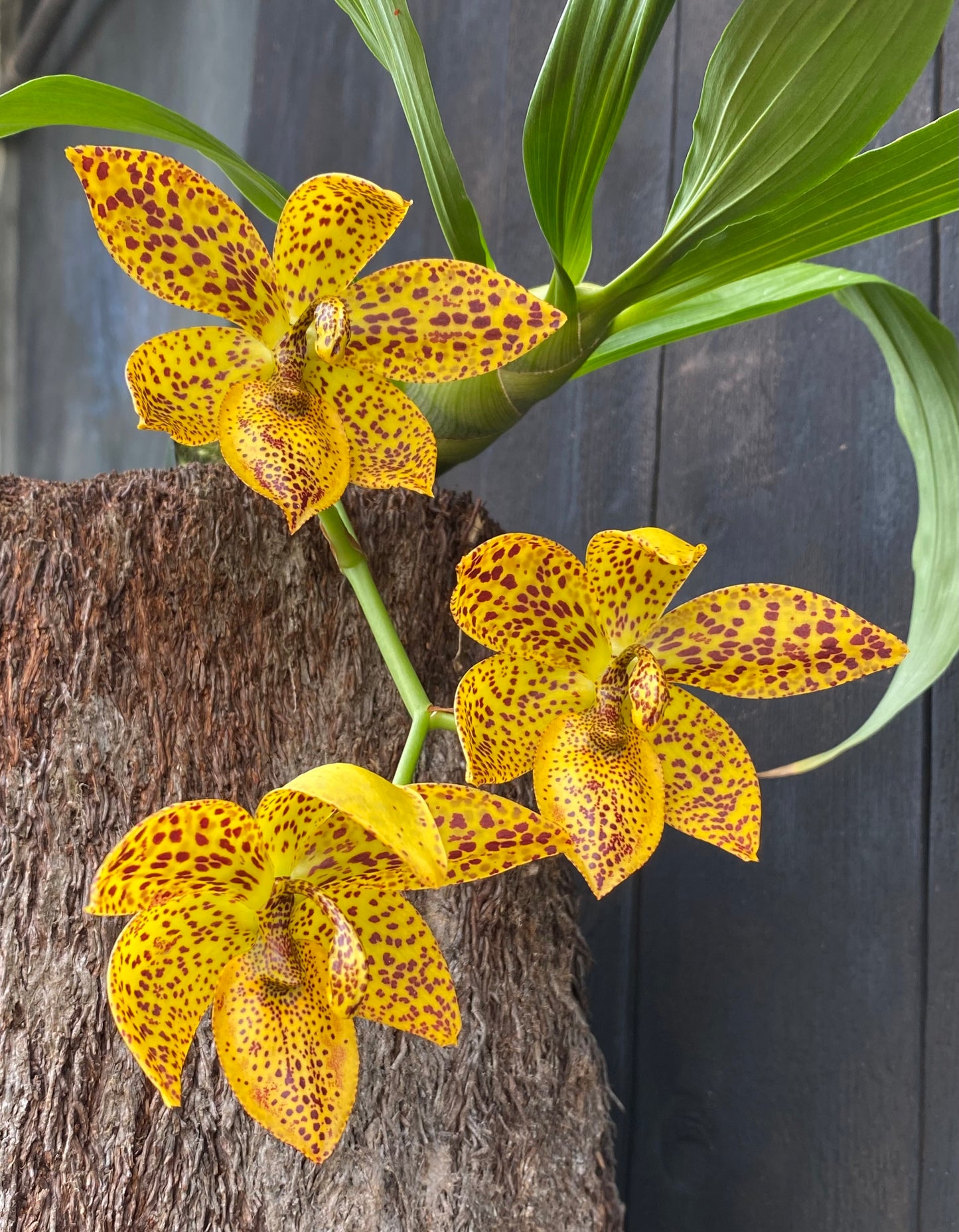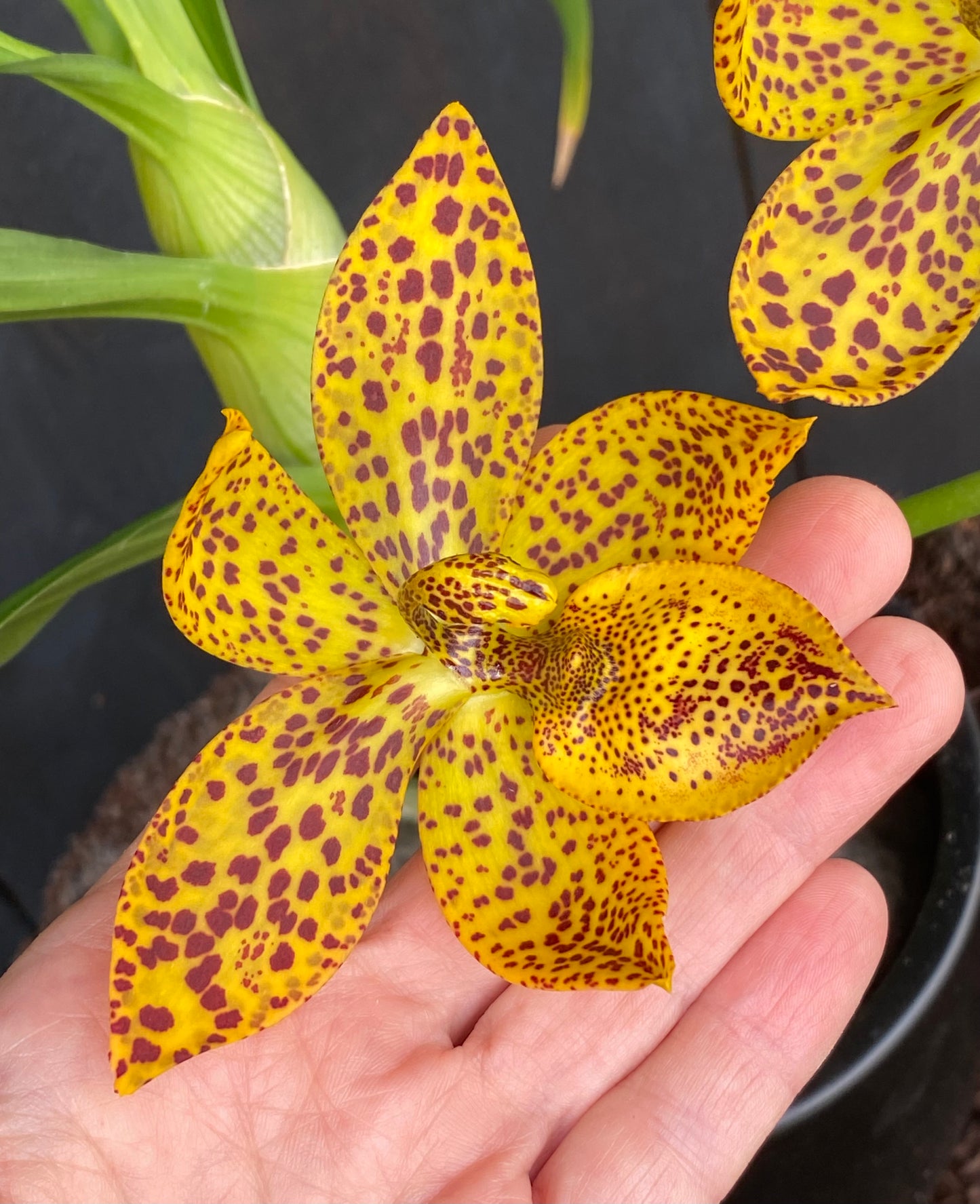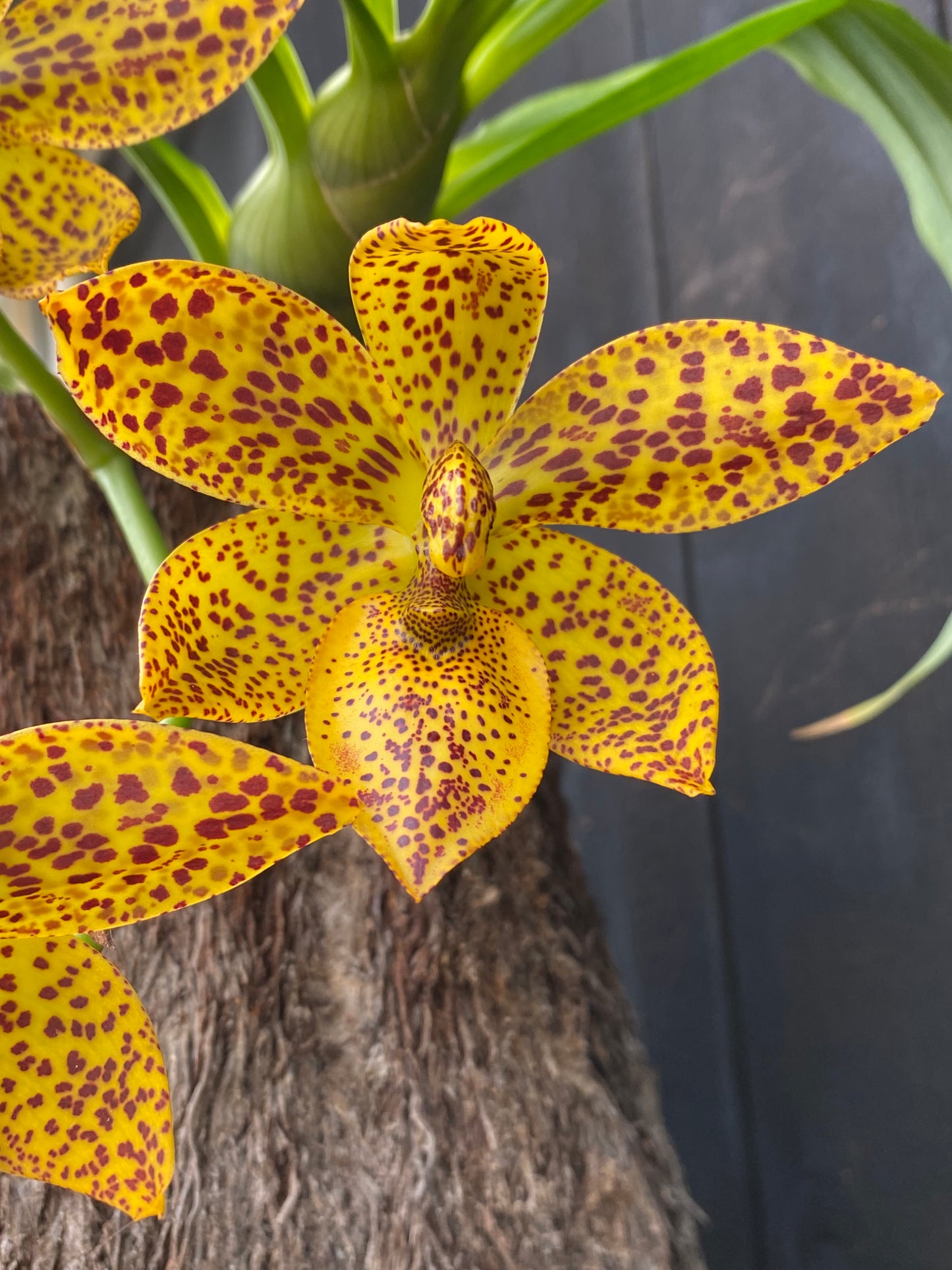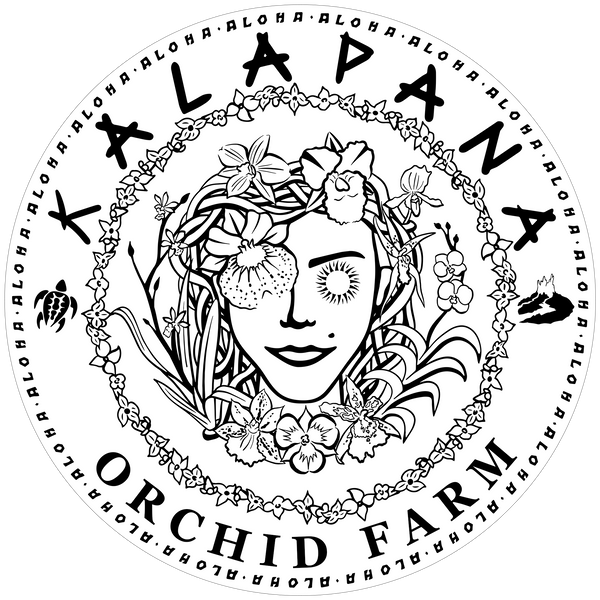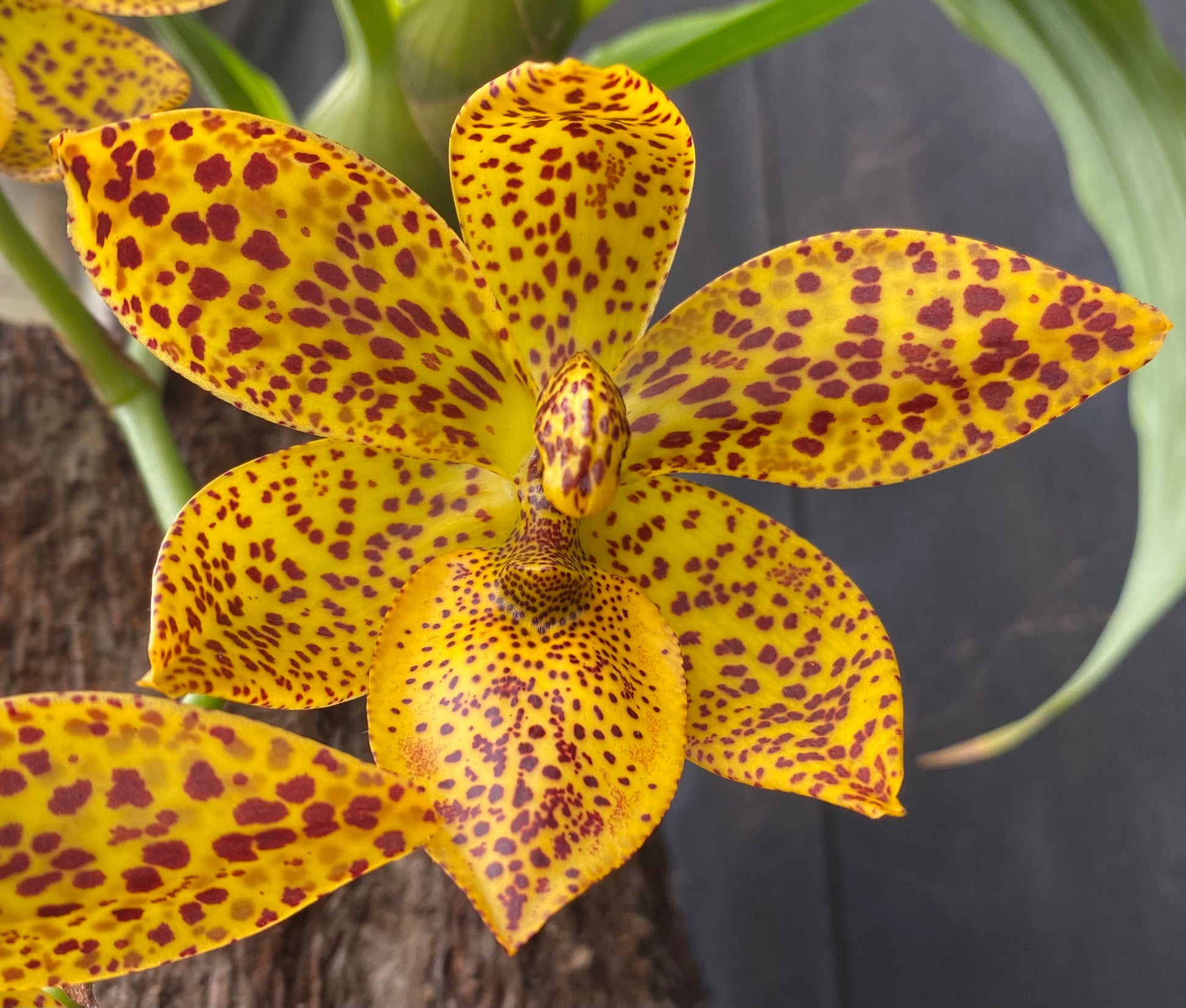Kalapana Orchid Farm
Cycd. Leopard's Gold
Cycd. Leopard's Gold
Couldn't load pickup availability
This orchid doesn't just bloom; it erupts. Imagine a gracefully arching spray of flowers the color of molten gold, each one liberally painted with bold, distinct leopard spots in shades of deep burgundy and brown. The flowers themselves are waxy, substantial, and wonderfully bizarre. The petals and sepals often have a slight, elegant twist, a nod to their Mormodes heritage, while the overall shape and magnificent swan-like column come directly from its Cycnoches parent. And the fragrance? It is absolutely breathtaking—a powerful, spicy-sweet perfume that is complex and fills an entire room. The plant itself is a powerhouse, forming large, cigar-shaped pseudobulbs that produce enormous, pleated, vibrant green leaves during their growing season before shedding them for a winter rest.
Quick Start
Light: Bright, filtered light, 2,500–4,000 foot-candles (≈25k–40k lux). Cattleya-level light. Temps: Warm. Days 75–85°F (24–29°C); Nights 62–68°F (17–20°C). Water: Abundant water and fertilizer during active growth. Keep dry during winter dormancy after leaves drop. Humidity: 50–70%. Higher during the growth phase. Fertilizer: Heavy feeder. Use a balanced fertilizer at full strength weekly during peak growth. Media: Moisture-retentive but airy. Sphagnum moss or a fine bark mix in a plastic pot works well.
🌺 Orchid Lore & Discovery
Cycnodes Leopard's Gold is a spectacular hybrid that perfectly showcases the magic of combining two related but distinct genera from the Catasetinae subtribe. It is a cross between Cycnoches chlorochilon and Mormodes sinuata.
Cycnoches chlorochilon, the famous "Swan Orchid," hails from the warm forests of Panama, Colombia, and Venezuela. It contributes the large flower size, the waxy, heavy substance, that incredible swan-shaped column, and most of its powerful, intoxicating fragrance.
Mormodes sinuata, a species from the mountains of Peru, provides the brilliant golden-yellow to orange coloration and, most strikingly, the dramatic, dark leopard-spotting that makes this hybrid so famous.
This plant embodies the feast-or-famine life cycle of the Catasetinae. It grows furiously for about six to eight months, storing massive amounts of energy and water in its pseudobulbs. After blooming, it drops all its leaves for a pronounced winter dormancy, resting and preparing for the next explosive growth cycle.
🌿 How to Grow Cycnodes Leopard's Gold
Light Provide bright, filtered light. An east-facing window with some direct morning sun or a spot in a greenhouse under 50% shade cloth is ideal. The large, thin leaves will scorch if exposed to direct midday sun. Leaves should be a healthy, bright apple-green.
Temperature This hybrid loves warmth. It grows best with daytime temperatures consistently in the 80s. Night temperatures should remain above 60°F. They are not tolerant of cold.
Water and Fertilizer: The Three Phases Proper watering is the absolute key to success and is tied directly to the growth cycle.
1. Dormancy (Winter): After the leaves turn yellow and fall off, stop watering almost entirely. The plant is asleep. A very light misting once a month is enough to keep the pseudobulbs from shriveling severely. Do not resume watering.
2. Waking Up (Spring): A new growth will emerge from the base. DO NOT WATER YET. This is the most common mistake. Wait until the new growth is 4–6 inches tall AND its new roots are 3–5 inches long before starting to water. Watering too early will rot the new growth from the base.
3. Active Growth (Summer/Fall): Once the new roots are well-established, it's time to hit the gas. Water and fertilize heavily and frequently. The potting mix should approach dryness but never dry out completely during this phase. They are incredibly thirsty and hungry plants. As fall approaches and the pseudobulb is fully mature, you can reduce fertilizer to prepare the plant for blooming and dormancy.
Humidity Provide good humidity, around 50–70%, especially during the active growing season to support the large, thin leaves. Good air circulation is always important.
Media Since these plants need a tremendous amount of water during their growth phase, a moisture-retentive medium is best. Plastic pots packed with high-quality sphagnum moss are a popular choice. A mix of fine fir bark, perlite, and charcoal also works well.
Repotting The best time to repot is during dormancy, just before the new growth appears. This allows you to position the plant and have the new roots grow directly into fresh media without being disturbed. They should be repotted every one to two years as they are heavy feeders and will exhaust the potting mix quickly.
Offered in 3" pots, blooming size only (no buds or spikes).
Share
